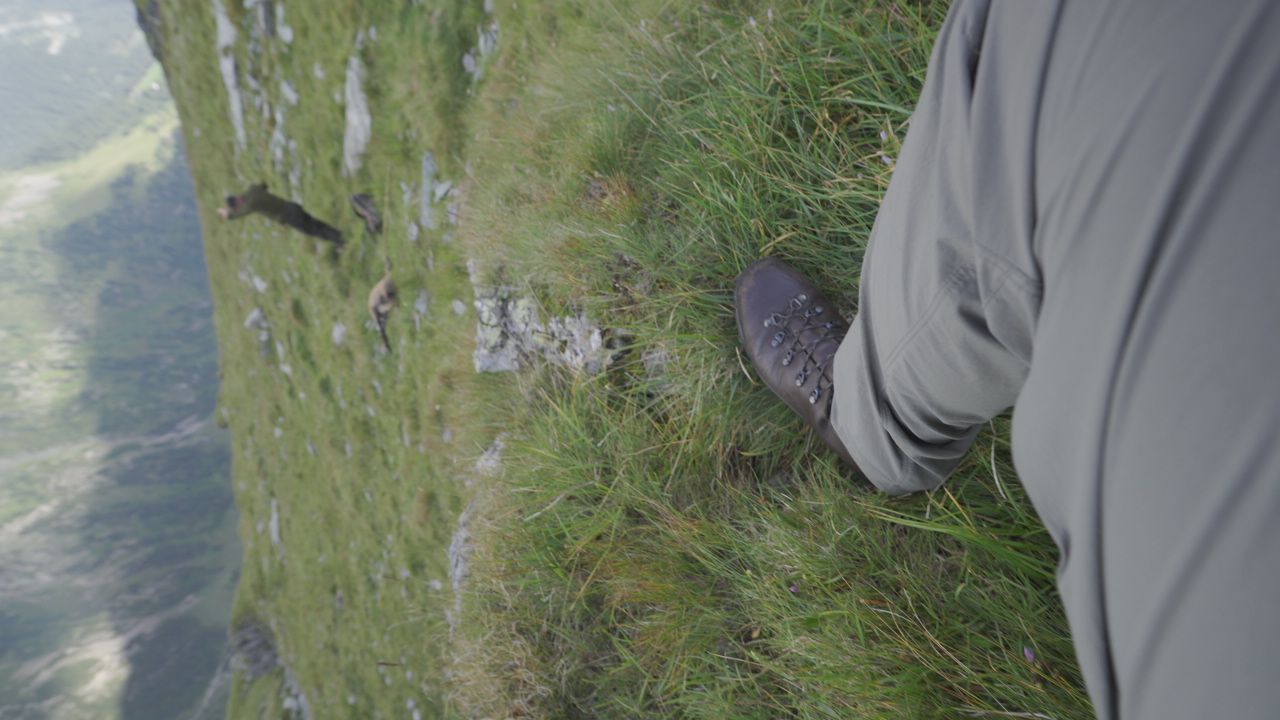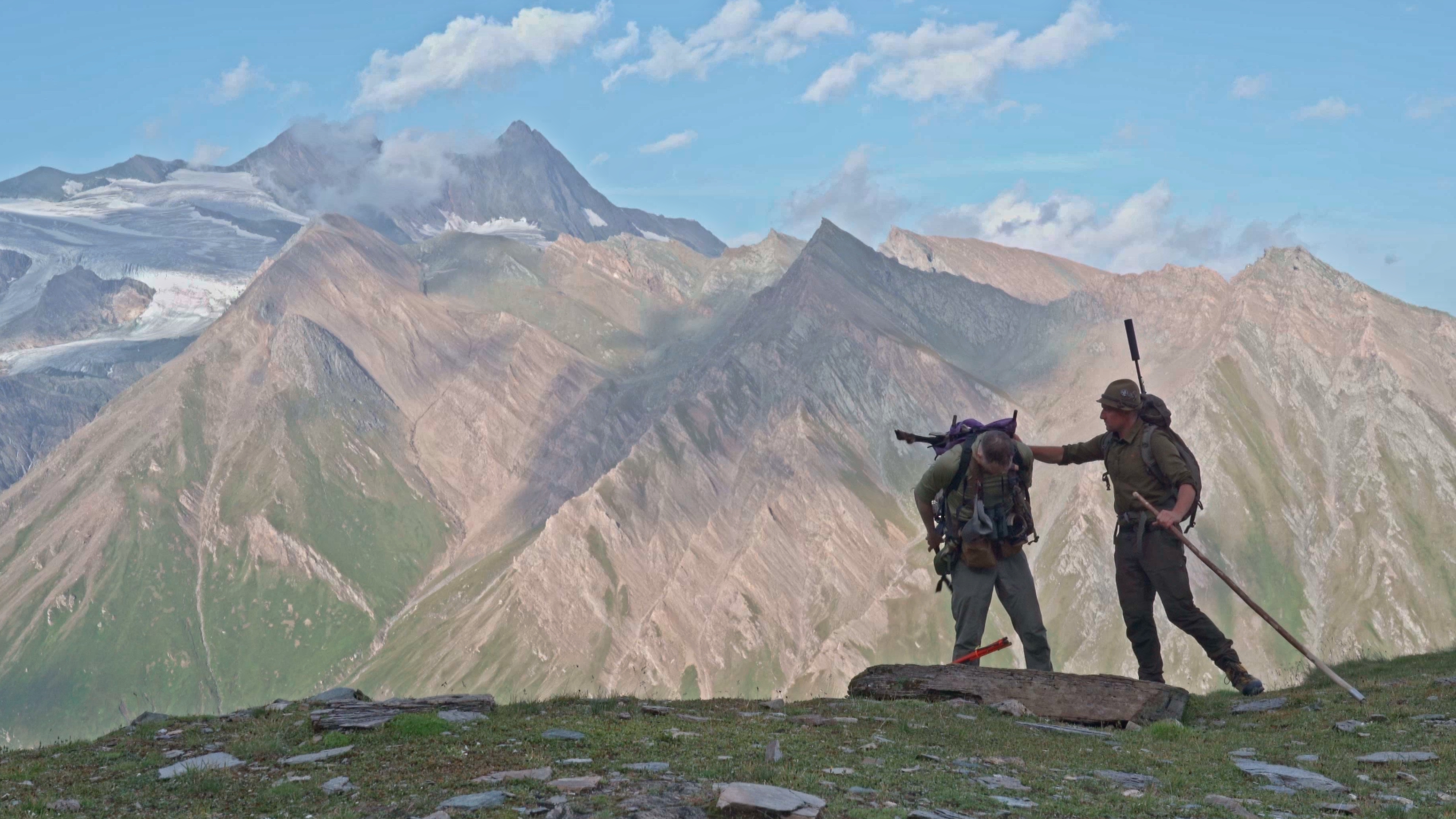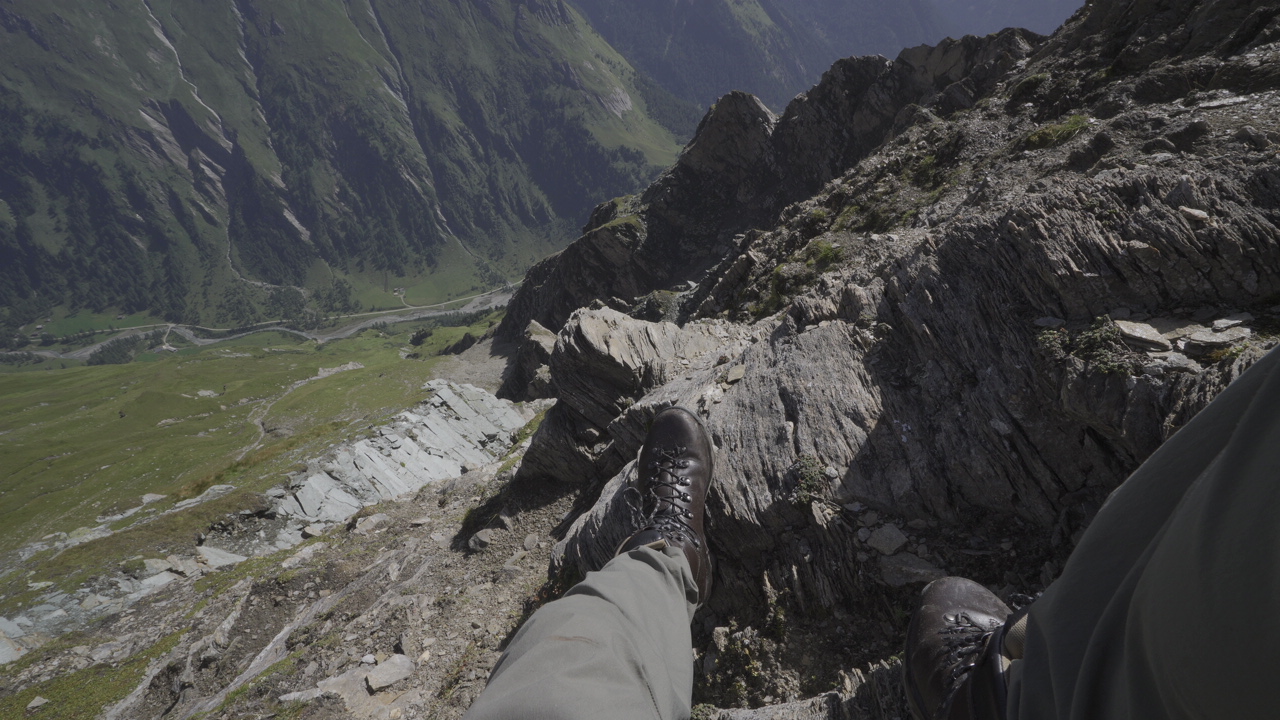Statistically the most dangerous thing you do in the outback is slip, trip or tumble (nearly 50% of all backcountry accidents). It seems very innocent and we all do it, but it can hurt and kill you fast! The second most dangerous thing is being hit in the head by falling objects, often released by your partner (that fist sized rock kicked loose, sliding, tumbling, bouncing, cascading...) I believe kiwis and austrians are where the "general population hunters" that has the most respect for these phenomenas together with skill to navigate these areas. The Austrians I've hunted with the last couple of seasons simply do mountains at a much higher level than me. And of course that exposure is currently putting my own progression on a fast-track.
To give you an indication of the terrain, the peaks in the background is just shy of 3800 m ASL.
I speak briefly about this in episode 363 and the "expert tip" together with the inclusion of all my falls and camera bumps is a long winded way of saying "identified dangers are not really dangerous as you know to avoid, it is when you don't pay attention the accidents happen". And that is what hurts you.
So with time and repetition, I hope to instill a sense of awareness for backcountry treks. I don't believe in a stern one-off lecture. If just one person lifts the head a little and contemplates what will smack and opening the eyes to what potential energy is in the terrain... mission accomplished.
Looks dangerous, but isn't. Every fiber of your body screams danger here.
Looks soft, but isn't. Slide here and you'll pick up speed and tumble in no-time. There's not really anything to arrest you, you will have to "octopus" or use an axe. At home, those small rocks is typically what will kill a tourist skidding by, smacking the head or similar. Our Instagram spots are notorious for it in rainy weather.

Welcome guest, is this your first visit? Create Account now to join.
Welcome to the NZ Hunting and Shooting Forums.
Search Forums
User Tag List
Results 1 to 11 of 11
 23Likes
23Likes
Thread: Nice chamois buck
Threaded View
-
21-11-2023, 08:59 PM #3Member

- Join Date
- Dec 2011
- Location
- Norway
- Posts
- 904
Last edited by Norway; 21-11-2023 at 09:20 PM.
Similar Threads
-
Hi from a young buck!
By JRT93 in forum IntroductionsReplies: 16Last Post: 03-09-2014, 03:12 PM -
roe buck
By gamekeeper39 in forum HuntingReplies: 10Last Post: 17-07-2013, 09:45 AM
Tags for this Thread
Welcome to NZ Hunting and Shooting Forums! We see you're new here, or arn't logged in. Create an account, and Login for full access including our FREE BUY and SELL section Register NOW!!





 LinkBack URL
LinkBack URL About LinkBacks
About LinkBacks







 Reply With Quote
Reply With Quote


Bookmarks